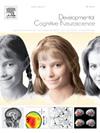从神经发育的角度理解青少年焦虑:啮齿动物和人类的比较回顾
IF 4.9
2区 医学
Q1 NEUROSCIENCES
引用次数: 0
摘要
青春期是一个动态的时期,以显著的神经和行为成熟为标志。然而,关于这种成熟如何改变焦虑在这一人群中的表达方式,或者相似的行为模式如何从不同的神经基础中产生,还有很多未知之处。这篇翻译综述描述了啮齿动物和人类的青少年和成人焦虑表现之间的关键差异。我们认为,跨物种的行为和大脑中潜在的潜在发育机制可能会导致年龄相关的差异。我们关注在焦虑中起作用或受焦虑影响的认知因素,包括三个领域:恐惧、奖励和注意力处理。我们回顾了与成年人相比,这些过程及其与焦虑的相互作用如何以及在多大程度上在年轻人中表现出来,以及在已知的情况下,跨物种的潜在神经回路。因此,本综述旨在提供对焦虑的转化神经和行为发育的细微差别的见解,以鼓励进一步利用青少年人类和啮齿动物进行焦虑研究。本文章由计算机程序翻译,如有差异,请以英文原文为准。
Understanding adolescent anxiety through a neurodevelopmental lens: A comparative review of rodents and humans
Adolescence is a dynamic time period, marked by significant neural and behavioral maturation. However, much remains unknown about how this maturation alters the way anxiety is expressed in this population, or how similar behavioral patterns may arise from divergent neural underpinnings. This translational review describes key differences between adolescent and adult manifestation of anxiety in rodents and humans. We suggest potential underlying developmental mechanisms in behavior and the brain across species that may contribute to age-related differences. We focus on cognitive factors that play a role in or are impaired by anxiety within three domains: fear, reward, and attentional processing. We review how and to what degree these processes and their interactions with anxiety manifest in youth compared to adults, and where known, with underlying neural circuits across species. Therefore, this review aims to provide insight into the translational neural and behavioral developmental nuances of anxiety in order to encourage further anxiety research utilizing adolescent humans and rodents.
求助全文
通过发布文献求助,成功后即可免费获取论文全文。
去求助
来源期刊

Developmental Cognitive Neuroscience
NEUROSCIENCES-
CiteScore
7.60
自引率
10.60%
发文量
124
审稿时长
6-12 weeks
期刊介绍:
The journal publishes theoretical and research papers on cognitive brain development, from infancy through childhood and adolescence and into adulthood. It covers neurocognitive development and neurocognitive processing in both typical and atypical development, including social and affective aspects. Appropriate methodologies for the journal include, but are not limited to, functional neuroimaging (fMRI and MEG), electrophysiology (EEG and ERP), NIRS and transcranial magnetic stimulation, as well as other basic neuroscience approaches using cellular and animal models that directly address cognitive brain development, patient studies, case studies, post-mortem studies and pharmacological studies.
 求助内容:
求助内容: 应助结果提醒方式:
应助结果提醒方式:


